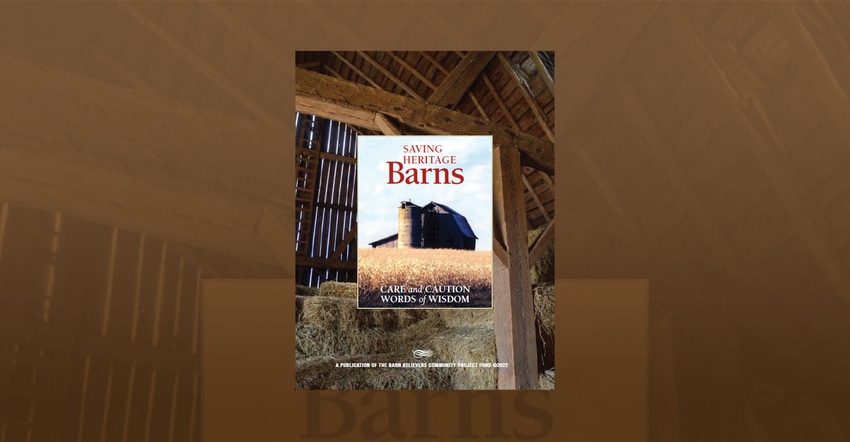June 27, 2022

On the way home from a relaxing weekend in beautiful northern Michigan, my husband and I decided to forgo the interstate in favor of some back roads.
I got a chance to check out crop progress, see the newest wind turbines in motion and point out the many grand heritage barns the state boasts. Many were grandstanding in the glory they first claimed more than 100 years ago, but there were also several on the verge of collapse — and let’s face it — extinction.
Gone are the days when communities came together to erect these awe-inspiring timber-frame barns, which were perfectly suited for the needs of the time. Along the route, some were missing whole sections of roof, windows were broken out, vines and tree limbs were gnawing at them, and foundations were failing.
It’s a story that’s been played over a disturbing amount of times. We are losing pieces of our agriculture history one shingle and wood door at a time.
Repairing old barns can be incredibly confusing, frustrating, mind-boggling and, of course, expensive and time-consuming when a barn has been neglected and maintenance has been postponed. Some offer little value to modern farming operations unless adapted for new purposes. Preserving history sometimes doesn’t seem cost-effective.
However, I can attest that I’ve heard many stories of pride in saving Great-grandpa’s barn. I’ve heard many stories of people regretting what they thought was their only option of tearing it down, but I’ve never heard a story of people wishing they had never invested in preserving a century-old-plus barn.
It’s been nearly a decade since Jan Corey Arnett began writing a barn column for Michigan Farmer (now also Ohio Farmer and American Agriculturist). She’s masterfully highlighted these historic barns, family memories and the journey of these farmstead anchors from original purpose to new mission. It’s been one of the most consistently read columns.
Five years ago, with others, Arnett started Barn Believers Community Project Fund, a nonprofit fund held with the Battle Creek Community Foundation, with a mission to save heritage barns. She soon roped me in to serve on the board.
Barn Believers provides grants, up to $5,000 with matching dollars encouraged, to Michigan nonprofits for barn-focused projects. That might include documenting remaining barns, creating historical collections and archives, evaluating or repairing barns for community use, convening groups to create barn-friendly policies, and more. To date, we have made four grants and have others pending.
While the fund cannot assist private barn owners with repairs, Barn Believers recently created a quality, full-color, eight-page booklet to help barn owners make decisions and evaluate their barns, including tips on code compliance, painting and siding, roofing, choosing someone to make barn repairs, words to the wise, becoming a barn advocate, barns in business, insuring barns, and researching history. It is authored by Arnett with input from several professionals.
“Saving Heritage Barns” is available at no charge and can also be read at barnbelievers.org. Copies have been sent across Michigan and to several states. Reach me at [email protected], or our team at barnbelievers.org, with address and quantity needs. I am also reachable at 517-749-4288 or at 710 W. Park St., Saint Johns, MI 48879.
Because Barn Believers runs on volunteers and gifts, we welcome donations (available on the website), ideas and collaboration. Above all, education and outreach are our mission.
If a business or group would like to mass distribute “Saving Heritage Barns,” we are happy to provide the PDF of the booklet, which could include a sponsor name or logo for reprinting.
Our main goal is to get this booklet into people's hands, so they understand their options when making decisions about heritage barns. People are realizing these extraordinary structures can have whole new lives and are definitely worth saving.
You May Also Like




